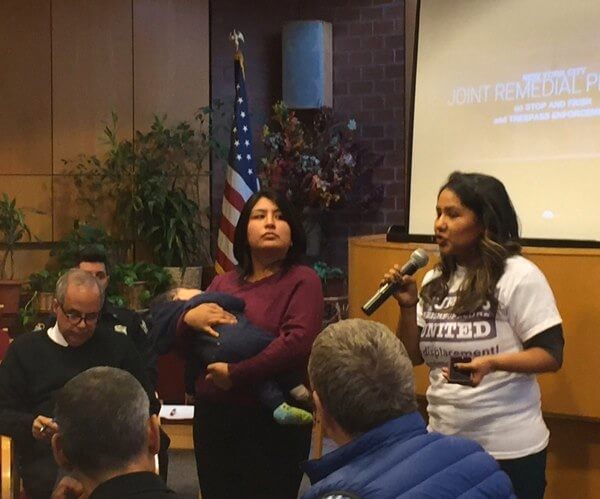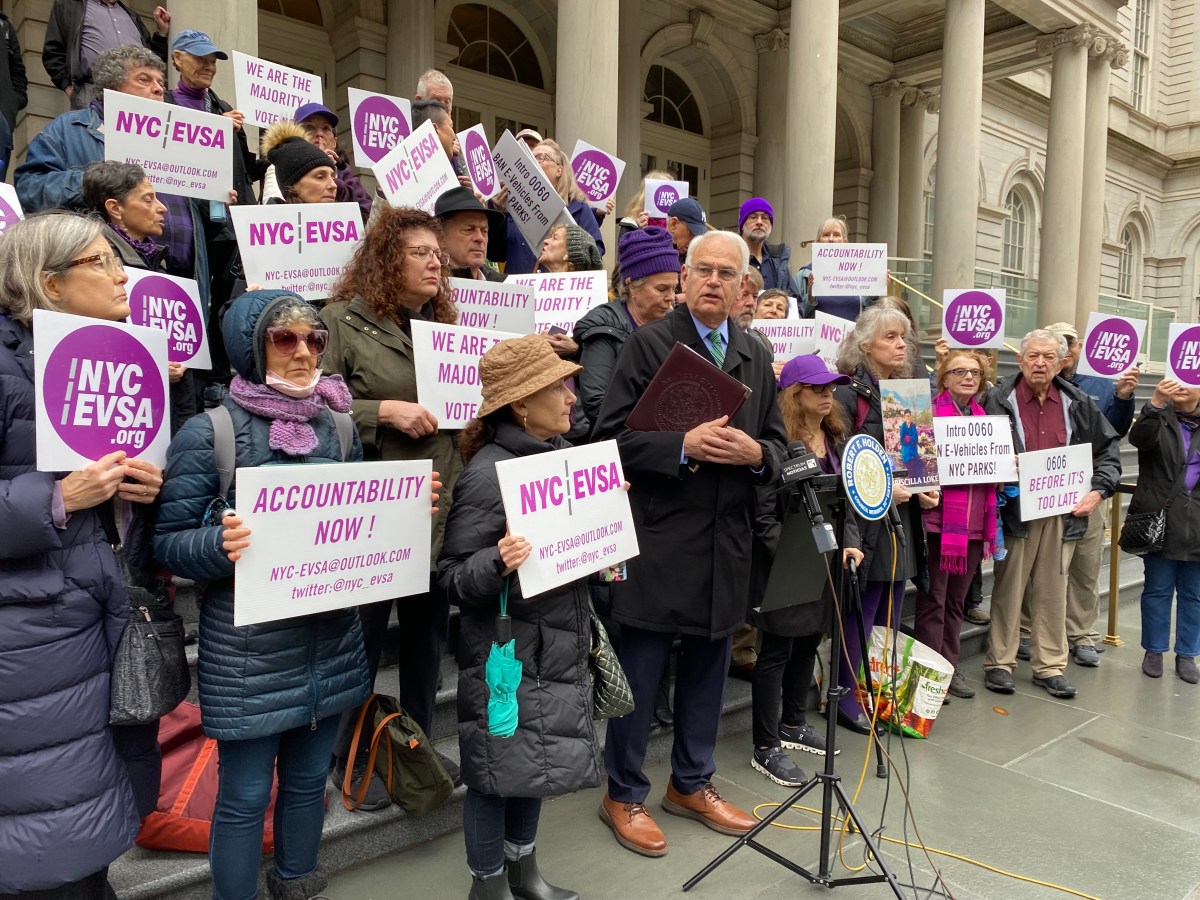By Patrick Donachie
Members of the Jackson Heights community spoke out about their experiences with the NYPD’s controversial “stop-and-frisk” tactic, part of a series of community forums mandated by a 2013 federal court ruling that labeled the NYPD’s use of the practice discriminatory.
The New York City Joint Remedial Process hosted the event at the Jewish Center of Jackson Heights at 27-05 77th St. Saturday afternoon in collaboration with the Mayor’s Office of Community Affairs. Shira Scheindlin, the presiding federal judge in Floyd vs. City of New York, mandated in 2013 that as part of the remedial process community forums should be held to discuss potential additional reforms beyond the mandated reforms included in the court ruling.
Justice Ariel Belen, a former justice for the New York Supreme Court’s Second Department, was appointed as a federal facilitator for the process in November 2014. He discussed the storied history of stop and frisk in New York, speaking about how the NYPD needed to have a reasonable suspicion to stop someone, believing the person had committed, is committing or is going to commit a crime.
“What happened in New York City was not that at all,” he said.
About 85 percent of people stopped were black or Latino, according to the Joint Remedial Process, and the New York Civil Liberties Union reported that nearly nine out of 10 stopped New Yorkers were innocent, according to NYPD data. Belen concurred, stating that only 5 percent of stops resulted in an arrest. In 2011, the city recorded 685,000 stops.
Nilesh Vishwasrao, a representative for the Jackson Heights-based community group Desis Rising Up and Moving, told the forum he had been stopped and frisked more than 20 times, while Tania Mattos, a co-founder of Queens Neighborhood United, which works to halt the detrimental effects of displacement and police misconduct, detailed her experiences with NYPD officers.
“Unfortunately, every time I’ve gone to the police, they’ve never helped me,” she said during the forum. “And that’s not how police/community relations should work.”
Mattos said the use of stop-and-frisk had decreased slightly in recent years, but she said there had been an increase in the use of surveillance cameras and vans. She suggested more investment was needed in the community in lieu of an increased police presence.
The Floyd ruling in 2013 included additional reforms, such as a monitored pilot program for NYPD officers wearing body cameras, as well as more training on implicit bias and better supervision, evaluation and documentation of recorded stops. There were 22,939 stops in 2015, according to a New York Civil Liberties Union analysis based on police data. The NYCLU analysis indicated 80 percent of people stopped were innocent and 83 percent of stops were conducted on black or Latino New Yorkers.
The Jackson Heights forum was one in a series sponsored by the JRP and the Mayor’s Community Affairs office, with one held in South Richmond Hill early in November. At the conclusion of the forums, Belen will create a report suggesting additional reforms that may help bridge the gaps between officers and community members.
Reach reporter Patrick Donachie by e-mail at pdona





































